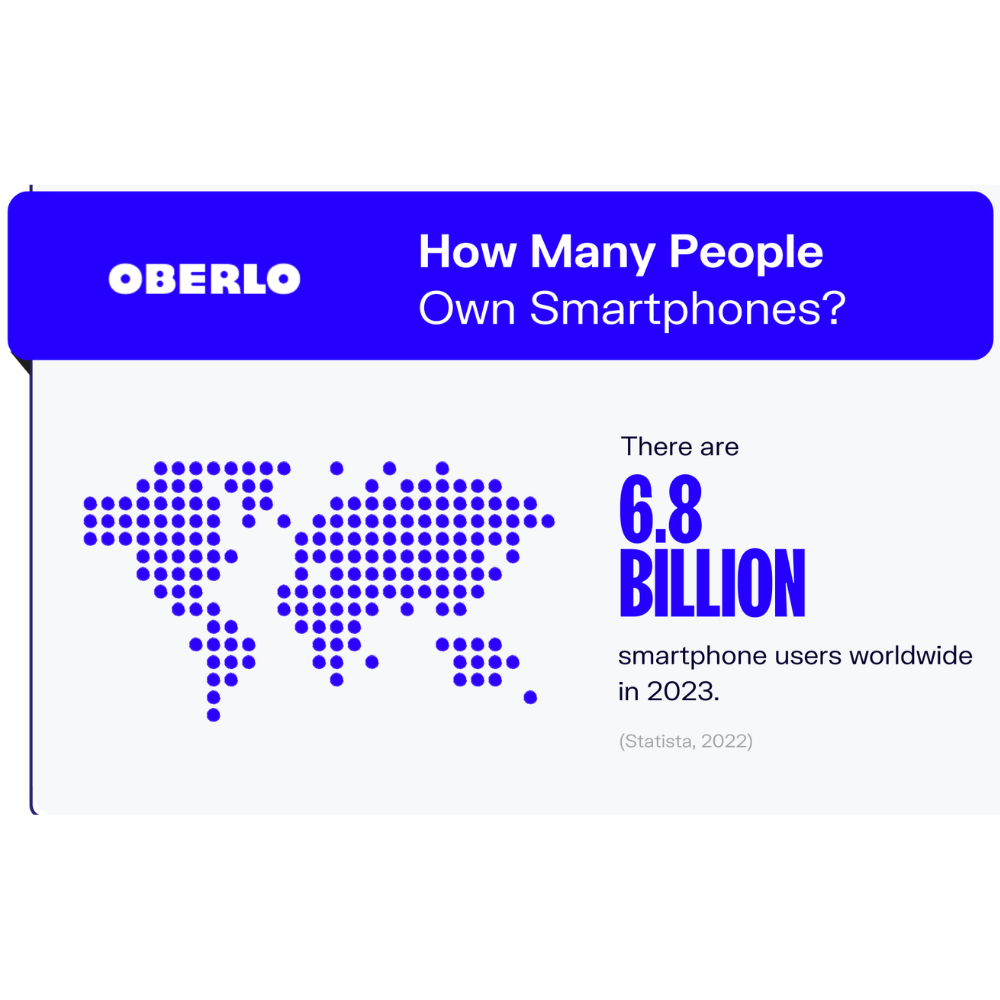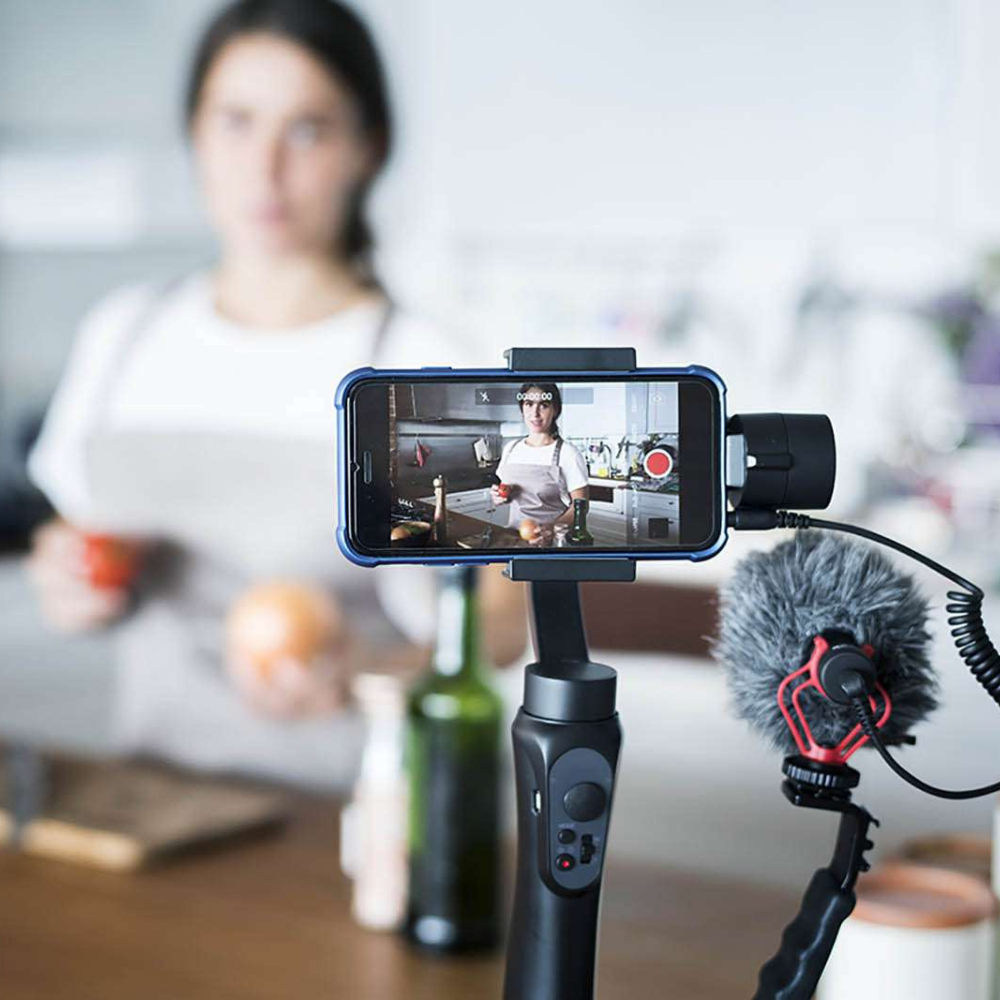In today's world, smartphones are not just gadgets; they are integral to our lives, making mobile users a target audience we cannot afford to ignore. Our mission is to learn how to effectively reach and engage this audience.
This article is your guide through the complex world of mobile advertising. We aim to equip you with the knowledge and tools necessary to your mobile marketing campaign capture the attention of potential customers who are merely a screen tap away. We will delve into the essential principles of mobile advertising and discover powerful tactics, including leveraging social media, to dominate the mobile marketing landscape.
Mobile Advertising: The Key To Captivating Your Audience
In the ever-evolving digital landscape, mobile advertising has emerged as a crucial tool for businesses looking to connect with their audience. With the majority of internet users accessing the web via mobile devices, it's essential to understand the nuances of mobile marketing to stay ahead of the competition. From understanding the basics to harnessing the power of social media, we'll leave no stone unturned in our quest for mobile marketing domination.
Key Takeaways:
- Grasp the essentials of mobile advertising and its significance in the digital era.
- Discover strategies to effectively engage your audience through mobile platforms.
- Learn how to leverage social media within your mobile advertising campaigns for maximum impact.
Understanding Mobile Advertising
Mobile advertising is an integral part of the digital marketing ecosystem, allowing businesses to reach consumers on their smartphones, tablets, and other mobile devices. It encompasses a variety of formats, including banner ads, video ads, and social media promotions. With the average person spending hours on their mobile device daily, the potential for impact is significant.
To truly captivate your audience, it's crucial to create ads that are not only visually appealing but also relevant and engaging. This means tailoring content to user preferences, behaviors, and even the specific device they're using. Personalization is key in mobile advertising, as it increases the likelihood of conversion and fosters a deeper connection with the audience.

The Rise Of Mobile Usage
The surge in mobile device usage has transformed the advertising landscape. People are now more likely to access the internet on the go, making mobile advertising an essential channel for reaching potential customers. This shift has prompted advertisers to rethink their strategies, focusing more on mobile-friendly content and responsive design.
Mobile advertising offers the unique advantage of immediacy and location-based targeting. Advertisers can deliver timely messages to users based on their current location, providing opportunities for hyper-local marketing and real-time customer engagement. This level of specificity is unparalleled in traditional advertising mediums and can significantly boost the effectiveness of your campaigns.
Crafting Compelling Mobile Ads
Creating compelling mobile ads requires a deep understanding of your audience and the context in which they'll encounter your message. The best mobile ads are concise, clear, and feature a strong call-to-action (CTA). They should be designed with the mobile user in mind, ensuring fast loading times and easy interaction.
Visual elements play a crucial role in attracting attention. Use high-quality images and videos that are optimized for small screens. Remember, the goal is to make an impact within the limited attention span of a mobile user, so every element of your ad must work together to encourage engagement and drive action.
Mobile Advertising Platforms
There are numerous platforms available for mobile advertising, each with its own set of features and audience segments. Popular platforms include Google Ads, Facebook, Instagram, and Twitter, as well as programmatic advertising networks that automate the buying and selling of ad space on mobile apps.
When selecting a platform, consider where your target audience spends their time and which formats they respond to best. For instance, Instagram might be ideal for visually-driven campaigns, while Twitter could be more effective for concise, text-based messages. Diversifying your approach across multiple platforms can help maximize reach and impact.
The Power Of Social Media In Mobile Advertising
Social media is a powerhouse in the realm of mobile advertising. Platforms like Facebook and Instagram offer advanced targeting options, allowing advertisers to reach specific demographics, interests, and behaviors. Moreover, social media ads are designed to blend seamlessly with organic content, providing a non-intrusive user experience.
To leverage social media effectively, focus on creating shareable, engaging content that encourages user interaction. Engaging posts that prompt likes, comments, and shares will not only increase your ad's reach but also boost its credibility through social proof. Remember, social media is about building communities, so prioritize content that fosters connection and conversation.
The Evolution Of Mobile Ad Formats
The landscape of mobile advertising is ever-evolving, with new ad formats emerging to captivate audiences in innovative ways. From the early days of simple banner ads to the latest interactive and immersive experiences, mobile ad formats have transformed significantly. This evolution is driven by the need to grab user attention in a cluttered digital space. Advertisers are now leveraging formats like rewarded video, carousel ads, and augmented reality experiences to provide value and entertainment, thereby increasing engagement rates.
Understanding these ad formats is crucial for marketers aiming to stay ahead of the curve. For instance, rewarded videos offer users in-app incentives for watching ads, which can lead to higher retention and satisfaction. Carousel ads allow users to swipe through a series of images or videos, offering a more dynamic storytelling approach. By staying informed about these evolving formats, advertisers can craft campaigns that not only capture attention but also enhance user experience, leading to better campaign performance.
The Significance Of User Experience In Mobile Advertising
When it comes to mobile advertising and uncovering effective strategies to captivate your audience, the user experience (UX) is paramount. A mobile ad that is not optimized for user experience can be more of a deterrent than an attraction. The key is to design ads that are not only visually appealing but also intuitive and easy to interact with. This means considering the size of buttons, the readability of text, and the responsiveness of the ad on various devices. By prioritizing UX, advertisers can significantly increase the chances of engagement and conversion.
Moreover, a positive user experience is closely tied to the overall perception of your brand. Mobile users are quick to judge and a single negative experience can lead to a loss of potential customers. Therefore, it's crucial to test mobile ads across different devices and platforms to ensure a seamless experience. Remember, in the world of mobile advertising, a user's pleasant interaction with your ad can be the difference between a sale and a swipe away.
Embracing The Mobile-First Approach
In the realm of mobile advertising, embracing a mobile-first approach is not just a trend; it's a necessity. As we delve into uncovering effective strategies to captivate your audience, it's crucial to recognize that mobile devices are often the primary means of online interaction for consumers. This shift in behavior means that advertisers must prioritize mobile-friendly content that is easily accessible and engaging on smaller screens. By doing so, businesses can ensure that their mobile marketing strategies and efforts are aligned with the ways in which their audience is most likely to engage with their brand.
A mobile-first strategy also involves optimizing all aspects of the advertising experience for mobile users. From the loading speed of your ads to the clarity of your call-to-action, every element must be tailored to meet the expectations of a mobile audience. This level of optimization not only improves user experience but also boosts the effectiveness of your campaigns. As we continue to explore mobile marketing domination, remember that a mobile-first mindset is the cornerstone of success in this digital age.
The Future Of Mobile Advertising Technologies
With the ever-evolving landscape of technology, mobile advertising is poised to undergo significant transformations. Innovations such as augmented reality (AR) and virtual reality (VR) are beginning to make their mark, offering immersive experiences that captivate audiences like never before. By integrating AR filters or VR demonstrations into mobile ads, brands can create interactive campaigns that not only engage but also leave a lasting impression on consumers. This leap forward in advertising technology allows for storytelling that transcends traditional boundaries, turning passive viewers into active participants.
The potential of 5G technology also cannot be overlooked when discussing the future of mobile advertising. The increased speed and connectivity that 5G networks provide will enable advertisers to deliver high-quality content with minimal loading times, reducing the chance of user drop-off due to impatience. This advancement will be crucial in uncovering effective strategies to captivate your audience, as it will allow for the seamless integration of video and interactive elements without sacrificing user experience. As we look ahead, advertisers who leverage these cutting-edge technologies will likely lead the charge in mobile marketing innovation.
The Integration Of Augmented Reality In Mobile Advertising
Augmented reality (AR) is revolutionizing the way brands interact with their audience through mobile advertising. By overlaying digital content onto the real world, AR campaigns offer a level of engagement that traditional ads can't match. Imagine pointing your smartphone at a magazine ad and watching a product come to life, or a billboard transforming into an interactive game. These immersive experiences not only captivate users but also create memorable brand interactions that drive consumer action. As we delve deeper into mobile marketing domination, the integration of AR in mobile ads is an effective strategy that brands are increasingly leveraging to stand out in a crowded digital landscape.
The potential for AR in mobile advertising is vast, from virtual try-ons for fashion and beauty products to interactive 3D models for home goods. This technology allows consumers to experience products in a unique and personalized way, directly from their mobile devices. For instance, a furniture company could enable customers to visualize how a new sofa would look in their living room before making a purchase. By incorporating AR, advertisers can not only enhance the user experience but also provide valuable information that aids in the decision-making process. As we continue uncovering effective strategies to captivate your audience, AR stands out as a cutting-edge tool in the arsenal of mobile advertising.
The Impact of 5G Technology On Mobile Advertising
The rollout of 5G technology is set to make a significant impact on mobile advertising by enabling faster, more reliable, and more responsive user experiences. With 5G's low latency and high-speed connectivity, advertisers will have the opportunity to create more complex and interactive ad content that loads instantaneously. This technological advancement opens up new possibilities for real-time data processing and personalized ad delivery, ensuring that the right message reaches the right user at the perfect moment. As we explore the basics of mobile advertising, the advent of 5G is a game-changer that can help brands achieve mobile marketing domination through enhanced performance and user engagement.
Moreover, 5G's ability to handle larger volumes of data can lead to more sophisticated targeting and personalization strategies in mobile advertising. Advertisers can utilize the increased bandwidth to incorporate high-definition video content, complex interactive elements, and seamless augmented reality experiences without worrying about slow load times or buffering. This creates a more enjoyable and engaging experience for the user, which is crucial for capturing and retaining their attention. As we continue to uncover effective strategies for captivating your audience, the implications of 5G technology in mobile advertising cannot be overstated, promising a new era of innovation and interactivity in mobile marketing campaigns everywhere.
The Synergy Between Mobile Advertising And E-commerce

The synergy between mobile advertising and e-commerce is a match made in digital heaven. With more consumers turning to their smartphones for shopping, mobile ads have become a powerful tool for driving sales and increasing conversion rates. By utilizing mobile-specific features such as swipe-up links, in-app purchases, and one-click buying options, advertisers can create a frictionless path from ad to checkout. This streamlined approach not only enhances the user experience but also capitalizes on the impulsive nature of mobile shopping, making it easier for consumers to make purchases on the go.
Furthermore, the integration of mobile payment systems like Apple Pay and Google Wallet into mobile ads is revolutionizing the way we think about mobile commerce. These payment solutions offer a secure and convenient way for users to complete transactions directly within an ad, significantly reducing the steps needed to convert interest into a sale. By uncovering effective strategies that combine the immediacy of mobile advertising with the efficiency of e-commerce, businesses are able to tap into a lucrative market of on-the-move consumers, driving up revenue and solidifying customer loyalty. As mobile shopping continues to grow, the fusion of advertising and e-commerce will undoubtedly become a cornerstone of any mobile marketing strategy for domination.
Optimizing For Voice Search In Mobile Advertising
With the rise of virtual assistants like Siri, Alexa, and Google Assistant, voice search has become an integral part of the whole mobile search experience. As we uncover effective strategies for mobile advertising, it's essential to consider how voice search is changing the way users find information and interact with ads. By optimizing for voice search, advertisers can increase the visibility of their mobile ads and ensure they are part of the conversation—quite literally. This includes using natural language keywords and question-based phrases that align with conversational search queries.
Moreover, optimizing for voice search also means providing clear and concise information that can be easily relayed by virtual assistants. When users ask for recommendations or search for products via voice, they expect quick and accurate results. Advertisers who can effectively integrate voice search optimization into their mobile advertising strategies are likely to captivate an audience that is increasingly shifting towards hands-free, on-the-go interactions. As we refine our approach to mobile marketing, embracing voice search in mobile optimization, is a forward-thinking move that can set your brand apart in a crowded digital landscape.
Harnessing The Power Of Mobile Analytics
In the realm of mobile advertising, analytics play a crucial role in understanding how your ads are performing and how your audience is interacting with them. By leveraging the power of mobile analytics, advertisers can gain insights into user behavior, ad engagement, and conversion rates. This data is invaluable for optimizing campaigns and improving the effectiveness of your mobile advertising efforts. Analytics can show you which ads are resonating with your audience and which ones might need a tweak or two.
Furthermore, mobile analytics can help you to refine your targeting strategies. By analyzing the data, you can uncover patterns and trends that can inform future campaigns. For instance, if you notice that users from a particular geographic location are engaging more with your ads at certain times of the day, you can use this information to tailor your ad scheduling and content. In essence, mobile analytics are not just a tool for measurement, but a compass that guides you towards mobile marketing domination.
Leveraging Location-Based Mobile Advertising
Location-based mobile advertising represents a powerful tool in the arsenal of mobile marketers. By utilizing the GPS technology inherent in smartphones, businesses can target users based on their real-time location, delivering relevant and timely ads. This hyper-targeted location based marketing approach ensures that promotions and offers reach consumers when they are most likely to be influenced, such as when they are near a store or in a specific neighborhood known for shopping or dining.
The effectiveness of location-based advertising lies in its ability to connect with consumers on a personal level. For example, a coffee shop can send a mobile push notifications a notification for a discount on a latte when a user is within walking distance. This not only increases the likelihood of the user visiting the shop but also enhances the user's perception of the brand as attentive and customer-oriented. As privacy concerns and regulations evolve, it's essential for advertisers to use location data responsibly, ensuring transparency and user consent to maintain trust and compliance.
Targeting And Personalization
Targeting and personalization are at the heart of effective mobile advertising. By collecting data on user preferences and behaviors, advertisers can create highly personalized campaigns that resonate with their audience. This level of customization can lead to higher engagement rates and a better return on investment (ROI).
Utilize tools like customer relationship management (CRM) systems and analytics platforms to gather insights and refine your targeting strategies. The more you know about your audience, the more tailored and impactful your mobile ads can be.
Measuring Mobile Advertising Success
To determine the success of your mobile advertising efforts, it's essential to track key performance indicators (KPIs) such as click-through rates (CTRs), conversion rates, and cost per acquisition (CPA). These metrics will help you understand how users are interacting with your ads and where there's room for improvement.
Use analytics tools to monitor campaign performance in real-time. This will allow you to make data-driven decisions and optimize your ads for better results. A/B testing different ad elements can also provide valuable insights into what resonates best with your audience.
The Role Of Video In Mobile Advertising

Video has become a dominant force in mobile advertising due to its ability to convey messages quickly and engagingly. Users are more likely to watch a short video on their mobile device than read a lengthy article. As such, incorporating video into your mobile advertising strategy can significantly enhance its effectiveness.
When creating video ads, keep them short, sweet, and to the point. Attention spans on mobile are short, so your video should capture interest within the first few seconds. Also, ensure that your videos are optimized for mobile viewing, with clear visuals and audible sound even without headphones.
Interactive Mobile Ads
Interactive mobile ads take engagement to the next level by inviting users to participate in the advertising experience. Formats like playable ads, polls, and swipeable galleries can increase user interest and time spent with your ad. This interactivity not only entertains but also provides valuable data on user preferences and behaviors.
When designing interactive ads, prioritize simplicity and ease of use. The interaction should feel intuitive and add value to the user's experience, not detract from it. Successful interactive ads are those that create a memorable experience and leave a lasting impression on the user.
The Importance Of Mobile-Friendly Websites
A mobile-friendly website is a non-negotiable aspect of mobile advertising. If your ad directs users to a site that isn't optimized for mobile, you risk losing their interest and potential conversions. A responsive design that adjusts to various screen sizes and fast loading times are critical for keeping users engaged.
Ensure that your mobile affiliate marketing website's navigation is straightforward and that calls-to-action are prominently displayed. The easier it is for users to find what they're looking for and take the desired action, the more effective your mobile advertising campaign will be.
Adapting To Mobile Advertising Trends
The mobile advertising landscape is constantly changing, with new trends and technologies emerging regularly. To stay competitive, it's important to keep an eye on these developments and be willing to adapt your strategies accordingly. Whether it's the rise of augmented reality (AR) ads or the growing importance of privacy and data protection, staying informed will help you make smarter advertising decisions.
Participate in industry events, follow thought leaders on various social media platforms, and subscribe to marketing newsletters to stay up-to-date on the latest trends. By being proactive, you can anticipate changes and position your mobile advertising campaigns for success.
Summary
Mobile advertising is an essential component of modern marketing strategies, offering unparalleled opportunities to connect with audiences on the devices they use most. By crafting compelling ads, leveraging social media, and focusing on targeting and personalization, businesses can create impactful campaigns that resonate with consumers. Measuring success, embracing video and interactive content, and maintaining a mobile-friendly website are also key to mobile advertising effectiveness. As trends evolve, staying informed and adaptable will ensure your mobile advertising and mobile affiliate marketing efforts continue to thrive.
FAQ Section
Q: What is mobile advertising? A: Mobile advertising is a form of digital marketing that targets users on mobile devices such as smartphones and tablets. It includes various formats social media marketing like banner ads, video ads, and social media promotions, designed to engage users on the go.
Q: Why is mobile advertising important? A: With the majority of internet users accessing the web via mobile devices, mobile advertising is crucial for reaching an audience where they are most active. It allows for personalized, location-based targeting and real-time engagement with mobile traffic, making it a highly effective marketing channel.
Q: How can I measure the success of my mobile advertising campaigns? A: Success of affiliate marketing, can be measured by tracking key performance indicators such as click-through rates, conversion rates, and cost per acquisition. Utilizing analytics tools to monitor these metrics will help you understand campaign performance and identify areas for optimization.
Need a hand starting your business?
Check out these resources I recommend…
1. I am truly delighted to share that this internet business model is among the most thrilling I have ever come across… Click here.
2. I finally found a guy who taught me a new way to make money online that actually works…Click Here.
3. Transform your communication with this email solution that I trust and use myself… Click here.
4. The # 1 🤖 Bot builder AI agent, that simply does everything for you. You need to see this to believe it…. Click Here.
5. This is the company I use to build fantastic converting websites and sale funnels… Click Here.










